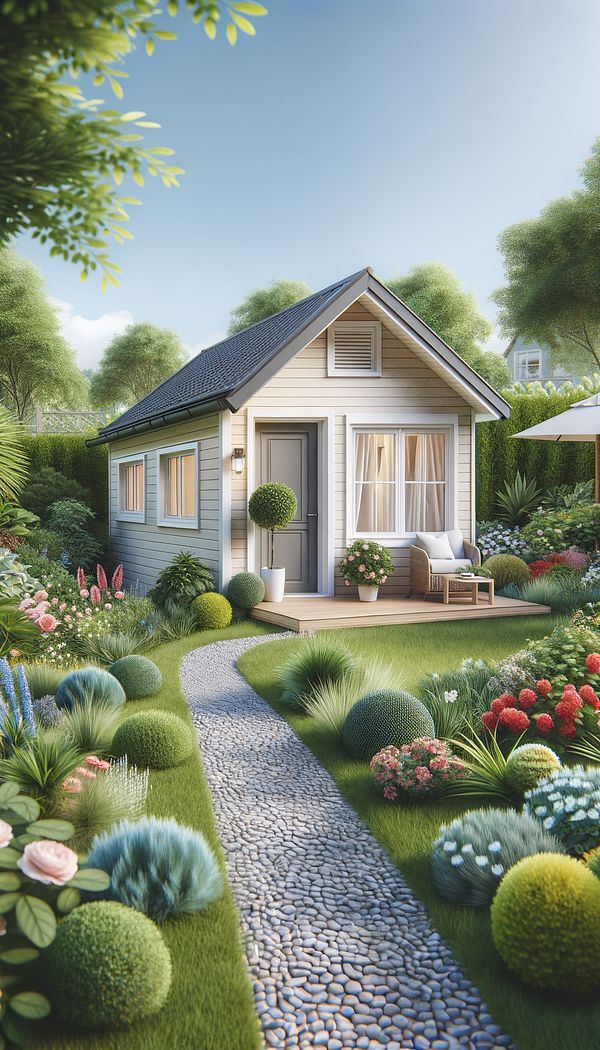What is an Accessory Dwelling Unit?
An Accessory Dwelling Unit (ADU) is a secondary housing unit on a single residential lot.
Description
An Accessory Dwelling Unit (ADU), sometimes called a granny flat or in-law suite, is a secondary housing unit located on the same lot as a primary residence. These units can be detached from the main house, connected, or even a part of the existing home, such as a converted attic or basement. ADUs are designed to be completely independent living spaces, equipped with their own kitchen, bathroom, and separate entrance.
The rise of ADUs reflects a growing need for flexible and affordable housing options as well as a desire for multi-generational living spaces. They offer homeowners the opportunity to generate additional income through rent, accommodate family members, or provide a separate work or creative space. In urban areas or regions with housing shortages, ADUs can significantly contribute to the diversification of housing stock and help address affordability issues.
However, constructing an ADU involves navigating zoning laws, building codes, and sometimes neighborhood covenants, which can vary significantly depending on the location. This necessitates a well-thought-out plan and often the assistance of professionals in architecture, interior design, and construction.
Usage
Architects or interior designers may be engaged to design an ADU that complements the existing home while ensuring functionality and comfort for its occupants. Homeowners might consider building an ADU to house aging parents close by, provide a living space for a returning college student, or to rent out as a secondary source of income. Local governments might also promote the development of ADUs to increase affordable housing options within the community.
FAQs
-
Are ADUs legal everywhere?
The legality of ADUs varies by location, with local zoning laws and regulations governing their construction and use. It's important to check with local authorities before proceeding with any ADU project.
-
Can an ADU be used for rental income?
Yes, many homeowners build ADUs to generate rental income. However, it's important to comply with local regulations regarding rental properties.
-
Do ADUs need to match the main house in style?
While ADUs do not necessarily have to match the main house exactly, some jurisdictions have guidelines ensuring architectural harmony between the primary residence and the ADU. Consulting with an interior designer or architect can help achieve a cohesive look.
-
What are the common types of ADUs?
Common types of ADUs include detached units (such as backyard cottages), attached units with a separate entrance (such as above-garage apartments), and converted spaces within the main home (like basements or attics).
Practical Application
When planning an ADU, consider how the space will be used and by whom to ensure the design meets their needs. For example, if the ADU is intended for elderly parents, incorporating accessibility and ergonomics features like wider doorways and walk-in showers can provide comfort and safety. Working with professionals who understand local regulations and can navigate the permitting process is also crucial for a successful project.
-
Architectural Elements199 articles
-
Accessibility & Ergonomics30 articles
-
Construction & Building86 articles
-
Space Planning & Layout134 articles
-
Decorating Principles & Elements330 articles
-
PlasterPlaster is a building material used for coating, protecting, and decorating walls and ceilings.
-
Egyptian CottonEgyptian Cotton is a luxurious type of cotton known for its long fibers.
-
BedspreadA bedspread is a decorative fabric covering that is placed over a bed when it is not in use.
-
Vis-A-VisVis-à-vis in interior design refers to furniture or objects facing each other.
-
Sleepy Hollow ChairA Sleepy Hollow chair is a distinct type of armchair known for its comfort and unique design.
